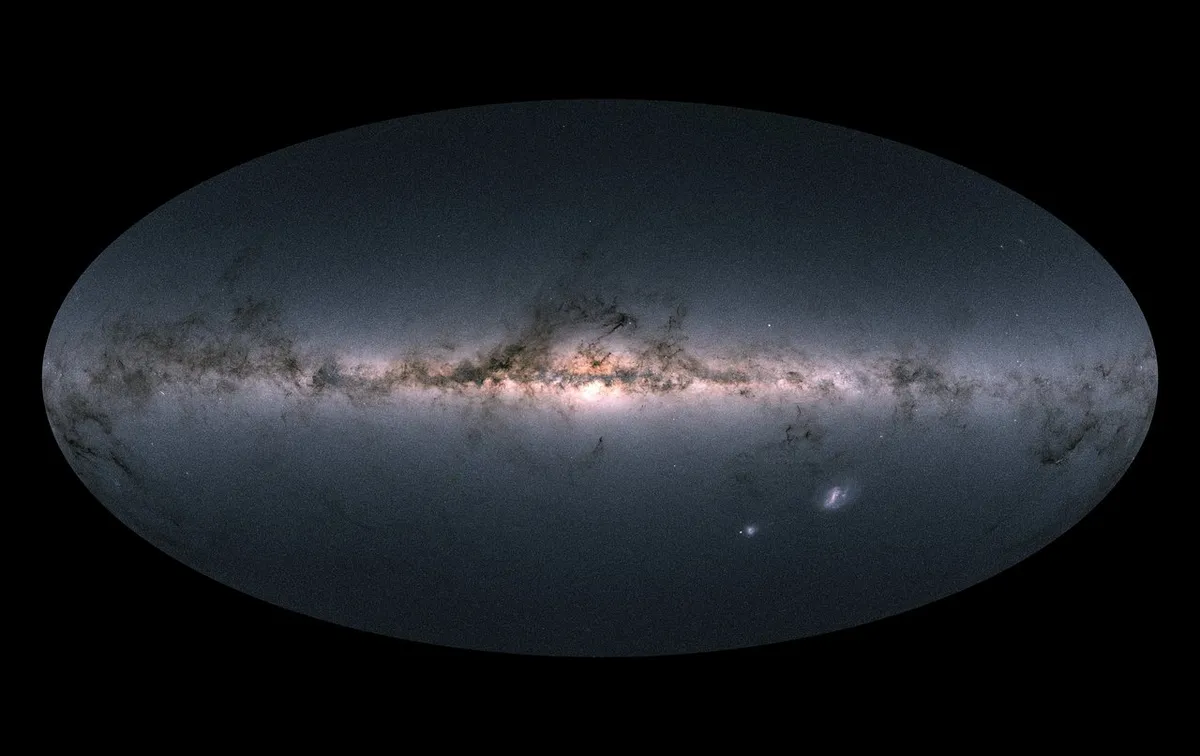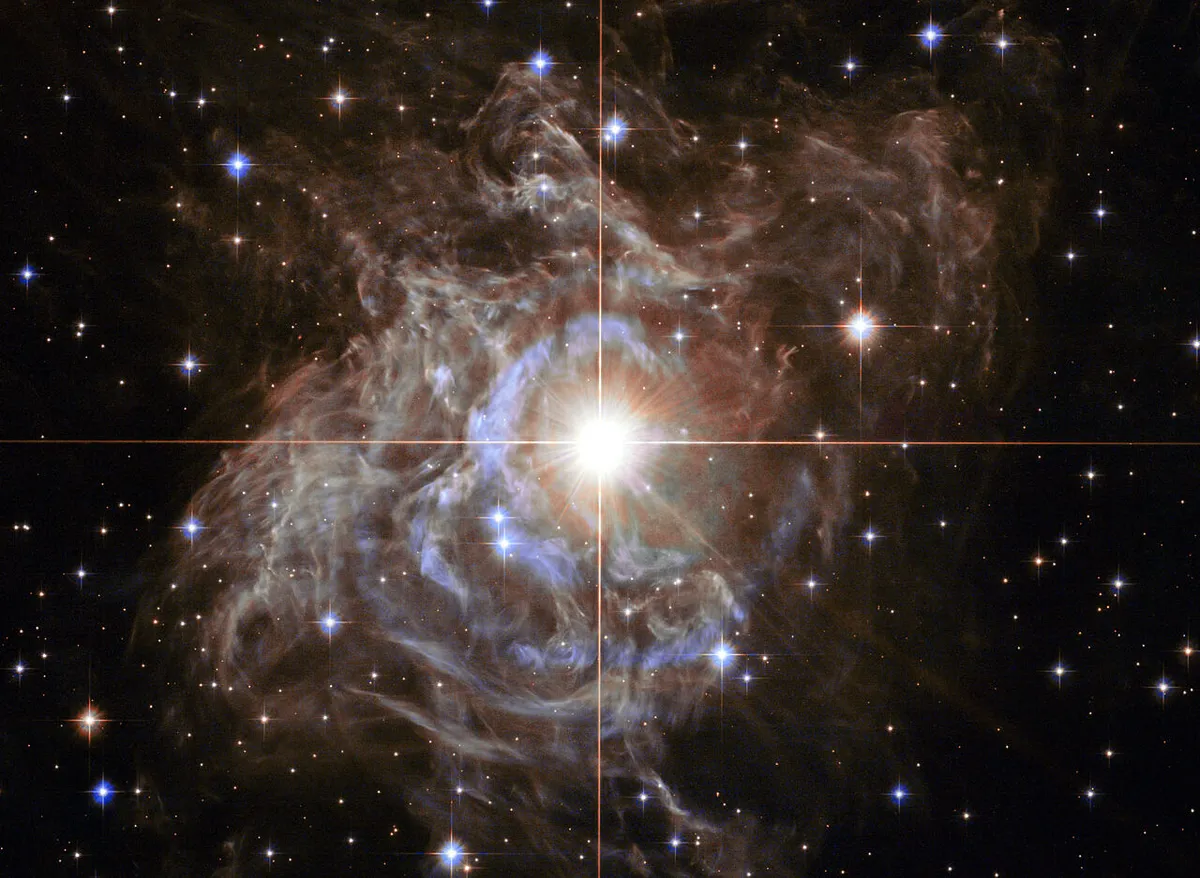Our Galaxy, the Milky Way, has a giant wave rippling through it.
This wave begins at the centre of the Galaxy and ripples outwards, like a cosmic stone being thrown into a galactic pond.
More Gaia science

Astronomers already know that our Galaxy isn't static: it rotates and wobbles. But the discovery of a strange wave rippling through it has come as something of a surprise.
The discovery was made using data from the European Space Agency’s Gaia space telescope.
Gathering data from 2014 to 2025 Gaia measured nearly 2 billion stars in our Galaxy to produce the most detailed map of the Milky Way ever made.

In the 1950s, scientists discovered our Galaxy's disc is warped. In 2020, Gaia discovered this disc wobbles like a spinning top.
Now, Gaia has revealed there's a huge wave stirring up stars in our Galaxy over distances of thousands of lightyears from the Sun.
Explaining the ripple

The team behind the study released images based on Gaia data that shows how the ripple behaves.
In the illustration above, the positions of thousands of bright stars are shown in red and blue, overlaid on Gaia’s maps of the Milky Way.
The left image shows our Galaxy as though we were looking at it face-on. On the right, the image shows a slice of our Galaxy edge-on.
The left side of the galaxy curves upward and the right side curves downward. This is the warped disc of our Galaxy.
In red and blue, the newly-discovered wave is shown. Red indicates areas where stars lie above the warped disc of the galaxy; blue shows areas where stars lie below.
The illustration reveals how the wave stretches over a huge portion of the galactic disc.
Its ripples are felt by stars 30–65 thousand lightyears from the centre of the galaxy. To put this into perspective, the Milky Way is about 100 thousand lightyears across.

"What makes this even more compelling is our ability, thanks to Gaia, to also measure the motions of stars within the galactic disc," says Eloisa Poggio, astronomer at the Istituto Nazionale di Astrofisica (INAF) in Italy, who led the study.
"The intriguing part is not only the visual appearance of the wave structure in 3D space, but also its wave-like behaviour when we analyse the motions of the stars within it."
In another image of the Milky Way, below, white arrows are used to show the motions of the stars.
This shows how the wave pattern of the vertical motions of stars is shifted horizontally relative to the wave pattern of the stars' vertical positions.
"This observed behaviour is consistent with what we would expect from a wave," says Eloisa.

A cosmic Mexican wave?
The team liken the Milky Way's wave to a 'Mexican wave' in a sports stadium; one that we're seeing frozen in time.
Those regions coloured red in the Galaxy maps represent people standing upright.
People with the largest positive vertical motions (represented by the largest white arrows pointing upwards) are those who are just starting to stand up.
The team made the discovery by studying the positions and movements of young giant stars and Cepheid stars.
Cepheids are 'variable stars', so-called because they vary in brightness.
The fact that young giant stars and Cepheids move with the wave, tells the team that the ripple might also be affecting cosmic gas in our Galaxy's disc.
Very young stars are still caught up in the ripples that passed through the gas and dust from which they were formed.

What's causing the wave?
The team don't yet know what's causing this huge ripple in our Galaxy. One suggestion is a past collision between our Galaxy and a dwarf galaxy.
The huge wave could be related to the so-called Radcliffe Wave, which is a smaller wave observed 500 lightyears from our Sun, stretching out over 9,000 lightyears.
“The Radcliffe Wave is a much smaller filament, and located in a different portion of the galaxy’s disc compared to the wave studied in our work (much closer to the Sun than the great wave)," says Eloisa.
"The two waves may or may not be related. That’s why we would like to do more research,"
"The upcoming fourth data release from Gaia will include even better positions and motions for Milky Way stars, including variable stars like Cepheids.
"This will help scientists to make even better maps, and thereby advance our understanding of these characteristic features in our home galaxy," says Johannes Sahlmann, ESA’s Gaia Project Scientist.

